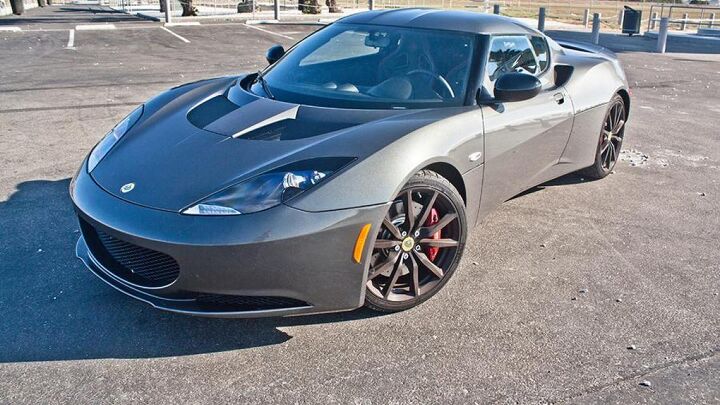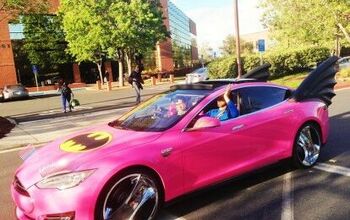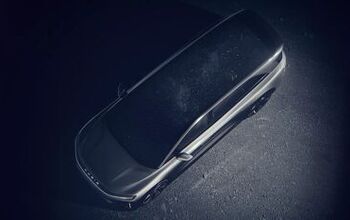Capsule Review: 2013 Lotus Evora S
Back in 2013, Jack Baruth conducted a road test of the Lotus Evora IPS (that’s Lotus speak for automatic), comparing it to the standard bearer of 2+2 sports cars, the Porsche 911. Much to the consternation of the Porsche PR department, Baruth’s verdict was in favor of the Evora:
Even with a less-than-perfect automatic, the Lotus still wins. The 911 PDK is a great two-pedal car, but the Evora IPS is simply a great car, with or without a third pedal.
The Evora died an ignominious death at the hands of regulatory and market forces. Sports cars have never been quicker, more efficient, more reliable or easier to own and operate. The Lotus Evora is a casualty of such progress.
Last year, I had the opportunity to drive an Evora with the supercharged V6 engine and a proper manual gearbox. As a teenage devotee of Tom Wolfe, my still forming brain was captivated by his image of a “Lotus Racing Car” painted “o range Day-Glo…skidding around the corners of the California suburbs in four-wheel drifts.”
The Evora I drove was painted a disappointingly anonymous shade of German Luxo-lease grey, and as I set out for Mullholland Drive, I realized that snaking, pitch black switchbacks were not the kind of place where somebody of my driving skill could truly unwind a 345-horsepower mid-engined sports car. But that didn’t mean I couldn’t enjoy myself.
Modern sports cars, from the Porsche Cayman to the Audi R8 to the Jaguar F-Type do their utmost to coddle you. Not in the electronic safety net and automatic transmission sort of way that Chris Harris wannabes like to complain about, but they generally try and make the driving experience easier and more comfortable. This isn’t a bad thing; for the target market that can actually afford to buy these cars, driving is mostly sitting in terrible traffic. Rarely are they ever driven in anger on a twisty back road or closed course.
The Lotus, on the other hand, is a throwback to the days when operating a sports car was more of a commitment than simply getting in and driving a very fast luxury car would be. You need to step over the tall side sills and twist your body into the rigid bucket seats, taking care not to hit your head on the roof while getting in. The wheel is small, the exhaust booms and the supercharger wails right behind your head. It’s an experience that is intoxicating on a lonely night time drive, but surely obnoxious when you’re 20 minutes late for a meeting and spilling coffee all over the console as the granite-stiff suspension bounces you mercilessly around the road.
The payoff is a purity of driving unavailable anywhere else short of a track-only vehicle like a Radical SR3 or, you guessed it, one of Lotus’ Exige or Elise trackday specials. The view out the front is supercar-esque, with its short hood and broad windscreen. The steering, though power assisted, is wonderfully precise, and the tiny, thick rimmed steering wheel is a welcome relief from the enormous, button-laden tillers of most German exotic machines. Directional changes are accomplished with micrometer precision. The feel makes every other benchmark vehicle (Mitsubishi Evo, various Porsches, the BMW E90) feel like digitally compressed files, while this is the rare master recording, pressed on vinyl. The hard backed buckets do a great job of holding you in place, while the gearchange is quick, direct and snappy. The supercharged V6, despite its plebian roots in the Toyota Camry, moves the featherweight exotic down the road with ease.
The Evora S was the kind of car that we want, a lightweight, unfiltered, incredibly direct, exotic looking sports car from a manufacturer full of heritage and history, reasonably priced compared to its competition and yet not so accessible that its intangible greatness wouldn’t be degraded by the great unwashed with more money than savoir faire. Simply put, it was an NSX with a much better badge. and far poorer build quality
Guess what? It was a miserable failure. Sports cars are supposed to be easy these days. You’re supposed to get the beautiful shape and the rocketship ride without the panel gaps that can be measured in inches. Exhaust noise and engine sounds should be artificially amplified or turned off with the flick of a switch, wind noise cancelled out and you should never under any circumstances catch of a whiff of curing epoxy or anything emanating from the engine bay.
In conclusion: 5 stars.
Photo Credit: Blake Z. Rong/Autoweek
More by Derek Kreindler
Latest Car Reviews
Read moreLatest Product Reviews
Read moreRecent Comments
- SCE to AUX All that lift makes for an easy rollover of your $70k truck.
- SCE to AUX My son cross-shopped the RAV4 and Model Y, then bought the Y. To their surprise, they hated the RAV4.
- SCE to AUX I'm already driving the cheap EV (19 Ioniq EV).$30k MSRP in late 2018, $23k after subsidy at lease (no tax hassle)$549/year insurance$40 in electricity to drive 1000 miles/month66k miles, no range lossAffordable 16" tiresVirtually no maintenance expensesHyundai (for example) has dramatically cut prices on their EVs, so you can get a 361-mile Ioniq 6 in the high 30s right now.But ask me if I'd go to the Subaru brand if one was affordable, and the answer is no.
- David Murilee Martin, These Toyota Vans were absolute garbage. As the labor even basic service cost 400% as much as servicing a VW Vanagon or American minivan. A skilled Toyota tech would take about 2.5 hours just to change the air cleaner. Also they also broke often, as they overheated and warped the engine and boiled the automatic transmission...
- Marcr My wife and I mostly work from home (or use public transit), the kid is grown, and we no longer do road trips of more than 150 miles or so. Our one car mostly gets used for local errands and the occasional airport pickup. The first non-Tesla, non-Mini, non-Fiat, non-Kia/Hyundai, non-GM (I do have my biases) small fun-to-drive hatchback EV with 200+ mile range, instrument display behind the wheel where it belongs and actual knobs for oft-used functions for under $35K will get our money. What we really want is a proper 21st century equivalent of the original Honda Civic. The Volvo EX30 is close and may end up being the compromise choice.


































Comments
Join the conversation
Maybe Lotus needs to do what Porsche did and build crossovers (or SUVs or whatever the hell they're called now). Cayennes are built so enthusiasts like us can complain about how the 991 came with electric steering, 991 GT3s catch fire, etc. and they can continuously improve their Cayman/Boxster lines as well. We'll hate Lotus for building it, but we'll love them for it at the same time because they can continue to exist and keep their Exige as their hardcore performance model.
I'm surprised that Derek describes the manual transmission as "quick, direct and snappy." Every other Evora review I have read is more in line with this Car and Driver excerpt of a base 2010 model: "The long-throw shift lever wins no prizes, as tech editor Robinson noted: 'It’s a gearbox in that it is a box full of gears, but, otherwise, any resemblance to a component of a high-performance sports car is purely coincidental.' This is a gearbox that absolutely refuses to be hurried." That alone would be a deal breaker for me. Is it possible that Lotus overhauled the transmission sometime in the last four years? Besides its harsh ride, poor build quality is another reason why the Evora is not a good daily driver. An old college friend of mine owned an Evora for two or three years before finally trading it in for a Cayman. His reason: reliability. That same Car and Driver article mentions three defects the magazine experienced during its short time the car. "A piece of plastic on the driver-side door suffered from fall-apart, a loose positive battery cable left us troubleshooting a dead electrical system for half an hour, and the navigation portion of the Alpine stereo—already frustrating to use and possessing an appallingly low display resolution—stopped working by our final day." If this can happen to press car that is meticulously maintained by a team of mechanics, I cringe to think of what time bombs may sitting on the lots of Lotus Dealers.